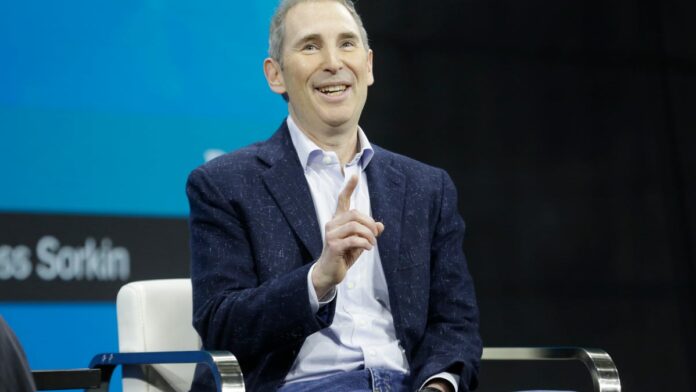The company that transformed online retail wants in on the generative AI boom — and is optimistic much of it will be built on its cloud computing service.
In his annual letter to shareholders published Thursday, Amazon chief executive Andy Jassy turned his attention to generative artificial intelligence — the stuff of chatbots and image generators — along with where he sees Amazon getting in next.
“Generative AI may be the largest technology transformation since the cloud (which itself, is still in the early stages), and perhaps since the Internet,” Jassy wrote. “There has never been a time in Amazon’s history where we’ve felt there is so much opportunity to make our customers’ lives better and easier.”
Jassy said generative AI is the company’s “next set of primitives” — or “foundational building blocks that builders can weave together in whatever combination they desire” — for improving customer experience. Amazon sees three layers of generative AI and is investing in all of them, he added.
The base layer consists of developers and companies building foundation models, Jassy wrote. Amid “scarce” supply and cost issues with Nvidia’s chips, Jassy pointed to how Amazon built its own AI training chip, called Trainium, and inference chip, called Inferentia, adding that that the second version of the chips released last year are “meaningfully more price-performant than their first versions and other alternatives.” Anthropic, Hugging Face, and Qualtrics are among Amazon’s customers for the chips.
The “middle” layer of the stack includes customers building generative AI models on Amazon’s Bedrock service which allows companies like Delta Airlines and Pfizer to build their own generative AI products.
As part of the “top” layer, Jassy said Amazon is “building a substantial number of GenAI applications,” for its consumers, including its AI-powered shopping assistant Rufus. (The bot, for its part, has been critiqued as a negligible upgrade to shopping at best.) The company is also building apps in Amazon Web Services (AWS), including what Jassy terms “arguably the most compelling early GenAI use case” — a recently launched coding companion called Amazon Q, which writes, debugs, tests, and implements software code.
Inside the company, the Amazon robotics team is building a set of foundation AI models, Jassy said, including models to “better identify products in complex environments,” and to “optimize the movement of our growing robotic fleet.”
But the company doesn’t see itself as the primary developer using its technology. While Amazon is working on building its own AI applications, Jassy said “the vast majority” will be built by other companies.
“[W]hat we’re building in AWS is not just a compelling app or foundation model,” Jassy said. “These AWS services, at all three layers of the stack, comprise a set of primitives that democratize this next seminal phase of AI, and will empower internal and external builders to transform virtually every customer experience that we know (and invent altogether new ones as well). We’re optimistic that much of this world-changing AI will be built on top of AWS.”
He added that AWS and its partners offer customers powering their AI services with AWS “the strongest security capabilities and track record in the world.”
In March, Amazon completed its $4 billion investment in AI startup Anthropic — its largest investment in an outside company ever — as it steps up its efforts to compete in the AI space with other industry giants like Microsoft.


